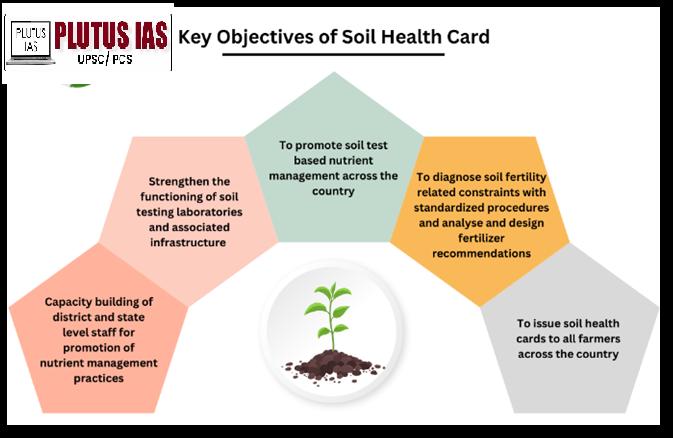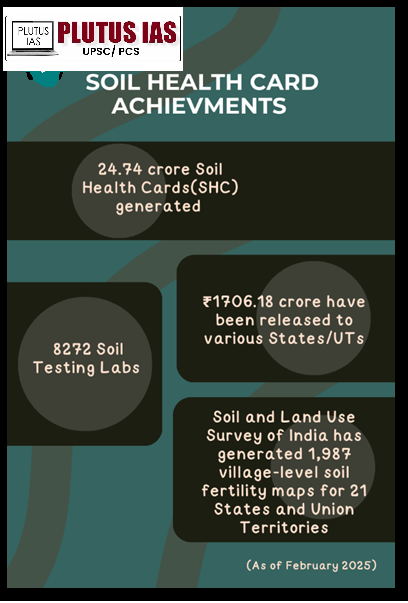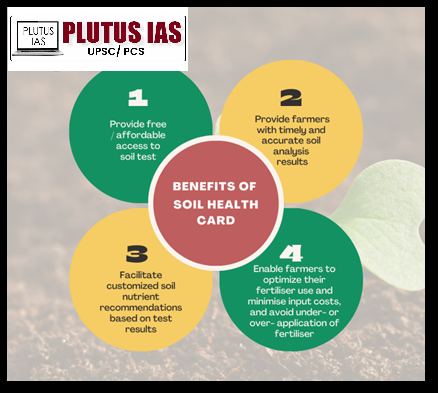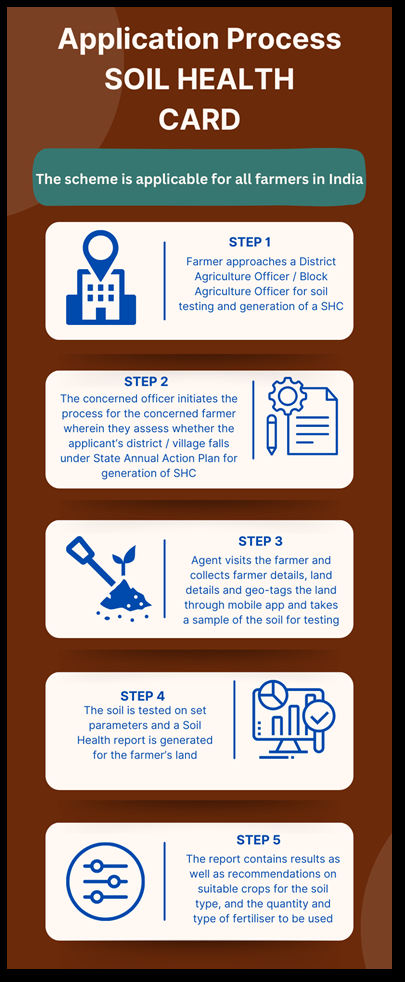26 Feb Swasth Dharaa, Khet Haraa: Celebrating a Decade of Soil Health Cards
This article covers “Daily Current Affairs” and Topic details of Swasth Dharaa, Khet Haraa: Celebrating a Decade of Soil Health Cards
SYLLABUS MAPPING:
GS-3-Economy, Indian Agriculture – Swasth Dharaa, Khet Haraa: Celebrating a Decade of Soil Health Cards
FOR PRELIMS
What is a soil health card? What are the Macro and micro soil nutrients and soil organic carbon?
FOR MAINS
Why in the news?
The Soil Health Card Scheme, launched by Prime Minister Narendra Modi, aims to assist farmers by providing information on soil health and recommending appropriate fertilizer use. The card includes data on 12 parameters, including macro and micro-nutrients, pH, EC, and organic carbon. The scheme helps farmers improve soil fertility and reduce over-fertilization, boosting agricultural sustainability. The Soil Health Card Portal www.soilhealth.dac.gov.in issues cards in a standardized format, available in multiple languages. The scheme’s impact on sustainable farming practices and crop productivity has been widely recognized in the news.

Key objectives of Soil Health card

Achievement of Soil Health card

Benefits of Soil Health Card

Technological Advancements
Soil Health Card App: To further ease the process of obtaining easy access to the Soil Health Card, the Government of India in 2023 made technological interventions in the New Soil Health Card Scheme. The Soil Health Card portal was revamped and integrated with a Geographic Information System (GIS) system so that all the test results are captured and seen on a map. To make the implementation/monitoring of the scheme smooth and to facilitate farmers easy access to their soil health card, the mobile application has been made robust with additional features such as:
Restrict the sample collection region for the Village Level Entrepreneur/Operator collecting the soil samples.
Auto selection of the latitude and longitude of the location
Generation of a QR code to link with the sample and test results of all samples directly on the portal from the geo-mapped labs, without any manual intervention.
This application provides graphical information of all over India and also shows multiple layers: State Boundary, District Boundary, Taluka Boundary, Panchayat Boundary and Cadastral Boundary.
The new system was rolled out in April 2023, and samples are now being collected through the mobile application. Soil Health Cards are now generated on this revamped portal.

Issues of Soil Degradation India
1. Waterlogging: Over-irrigation, especially in areas with poor drainage, leads to waterlogging, which reduces soil aeration and harms root growth, affecting crop yields.
2. Acidification: The excessive use of chemical fertilizers and improper pH management can lead to soil acidification, reducing its fertility and harming plant growth.
3. Loss of Organic Matter: Unsustainable agricultural practices, like monocropping and the use of synthetic fertilizers, reduce the organic matter in the soil, which is essential for maintaining its structure and fertility.
4. Soil Compaction: Heavy machinery used in agriculture can compact the soil, restricting water movement, root penetration, and nutrient absorption, thus reducing soil productivity.
5. Pollution from Chemicals: The overuse of pesticides and chemical fertilizers leads to soil contamination, which affects soil organisms and can pollute groundwater resources.
6. Land Misuse: Unsustainable land practices, such as urbanization, industrialization, and construction, contribute to the degradation of agricultural land, reducing the area available for farming.
7. Wind Erosion: In areas with insufficient vegetation, strong winds can cause the topsoil to blow away, leading to loss of soil fertility and degradation of land.
Conclusion
The Soil Health Card Scheme has transformed agricultural practices in India over the past decade. Since 2015, it has empowered farmers with crucial information on soil nutrient status and optimal fertilizer use, promoting sustainable farming and improved crop productivity. Initiatives like the School Soil Health Programme have expanded soil health awareness among students and local communities. With a robust mobile app, the process of obtaining a Soil Health Card has enhanced accessibility, efficiency, and transparency. As the scheme evolves, it continues to play a vital role in fostering sustainable agricultural development and safeguarding India’s soil health for future generations.
Download Plutus IAS Current Affairs (Eng) 26th Feb 2025
Prelims Questions:
Q. With reference to the Soil Health Card Scheme, which of the following statements is/are correct?
1. The Soil Health Card provides data on 12 soil parameters, including macro and micro-nutrients, pH, and organic carbon.
2. The Soil Health Card scheme is primarily aimed at providing direct financial aid to farmers for purchasing fertilizers.
Select the correct answer using the code given below:
A. 1 only
B. 2 only
C. Both 1 and 2
D. Neither 1 nor 2
Answer: A
Mains Questions:
(250 words, 15 marks)




No Comments